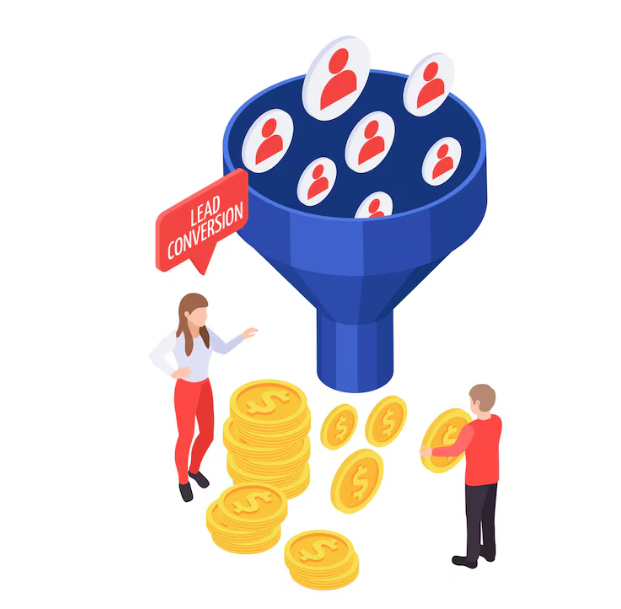Generating leads for marketing is only the first step in building a successful sales pipeline. While attracting potential customers is important, the real challenge lies in identifying which leads have genuine potential and converting them into paying customers. Without proper qualification and nurturing strategies, even a large pool of leads can result in wasted time, effort, and resources. Understanding how to effectively qualify and convert leads ensures your marketing efforts translate into tangible business growth.
The process of working with leads is more than just collecting names and email addresses. It’s about recognizing intent, prioritizing high-value prospects, and guiding them through the sales funnel with strategic communication. When executed correctly, leads for marketing can become a primary driver of revenue, creating a seamless connection between marketing and sales teams.
1. Understanding Leads for Marketing
leads for marketing are potential customers who have shown interest in your product or service, typically by engaging with your content, subscribing to a newsletter, or submitting their information through a form. Unlike general website visitors or social media followers, leads have provided identifiable information that allows marketers to initiate personalized engagement.
There are different types of leads, including:
- Cold Leads: Individuals who have shown minimal engagement but have potential interest.
- Warm Leads: Prospects who have interacted with content, attended webinars, or engaged in other forms of marketing.
- Hot Leads: Highly engaged individuals ready to consider purchasing.
Identifying the type of lead is essential for determining how to approach and nurture them effectively.
2. The Importance of Qualifying Leads
Not all leads are equally valuable. Sending unqualified leads to your sales team can reduce efficiency, increase frustration, and lower conversion rates. Qualifying leads helps ensure that marketing efforts focus on prospects who have the highest likelihood of converting.
Lead Scoring
Lead scoring assigns numerical values to leads based on criteria such as demographics, behavior, engagement level, and purchase intent. For example, a lead who downloads an in-depth guide and signs up for a demo may receive a higher score than someone who simply subscribes to a newsletter.
By scoring leads, marketing teams can prioritize high-value prospects, and sales teams can focus on leads that are more likely to convert, ensuring resources are used effectively.
Demographic and Firmographic Criteria
Understanding a lead’s characteristics helps determine fit. Factors to consider include:
- Industry and company size
- Job title or role
- Location
- Budget and authority to make purchasing decisions
Matching leads against these criteria ensures the sales team engages with prospects who align with the business’s target audience.
Behavioral Indicators
Behavioral data can provide insights into a lead’s level of interest and intent. This includes:
- Email opens and clicks
- Webinar attendance
- Downloads of content
- Website page visits
Tracking behavioral indicators helps identify which leads are most engaged and when they are ready to move to the next stage of the sales funnel.
3. Effective Strategies to Convert Leads
Qualifying leads is only half the battle; converting them requires a systematic approach that combines personalized communication, education, and timely follow-ups.
Personalized Communication
Generic messages rarely resonate with leads. Personalization, based on the lead’s behavior, interests, or industry, significantly improves engagement. Examples include:
- Tailored email campaigns
- Customized content recommendations
- Follow-ups referencing a lead’s previous interactions
Personalized communication shows leads that you understand their needs and positions your brand as a helpful, relevant resource.
Lead Nurturing
Lead nurturing involves guiding prospects through the buyer journey with consistent and valuable communication. Automated email sequences, educational content, webinars, and targeted social media campaigns can help warm leads and build trust over time.
Timely Follow-Ups
Speed matters when converting leads. Research shows that leads contacted within hours of engagement are more likely to convert. Marketing teams should ensure leads are promptly passed to sales representatives when they meet predefined qualification criteria.
Offering Value
Providing value at every touchpoint enhances conversion chances. This can include:
- Free resources like eBooks, templates, or calculators
- Product demos or trials
- Case studies or testimonials showcasing results
When leads perceive tangible value, they are more likely to engage with sales teams and make purchasing decisions.
4. Leveraging Technology to Optimize Leads
Modern tools play a crucial role in managing, qualifying, and converting leads for marketing.
Customer Relationship Management (CRM)
CRM systems centralize lead data, track interactions, and provide visibility across marketing and sales teams. This ensures no lead is lost or neglected.
Marketing Automation Platforms
Automation platforms allow for targeted email campaigns, behavior-triggered messages, and segmented workflows, streamlining the nurturing process and improving efficiency.
Analytics and Reporting Tools
Tracking metrics such as conversion rates, lead engagement, and ROI helps refine lead generation and nurturing strategies, ensuring continuous improvement.
5. Closing the Loop Between Marketing and Sales
For leads for marketing to truly convert, collaboration between marketing and sales is essential. Continuous feedback from sales teams regarding lead quality, engagement patterns, and conversion outcomes allows marketers to optimize targeting and nurturing strategies. This closed-loop system ensures that leads entering the pipeline are not only numerous but also high-quality, ultimately improving revenue outcomes and marketing ROI.
Conclusion
Generating leads for marketing is just the beginning of a successful sales process. Properly qualifying and nurturing these leads ensures that your sales team engages with prospects who are genuinely interested and ready to convert. By implementing lead scoring, tracking behavioral indicators, personalizing communication, and leveraging technology, businesses can create a structured, efficient process that maximizes conversion rates.
In short, leads for marketing are valuable only when approached strategically. Understanding how to identify, qualify, and convert leads transforms marketing efforts into revenue-generating opportunities, strengthens collaboration between marketing and sales, and positions your business for long-term growth.

